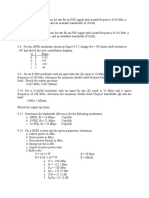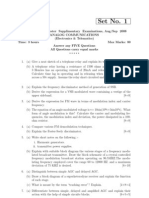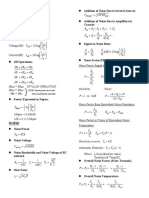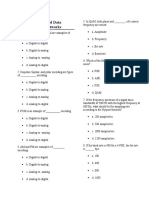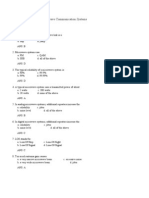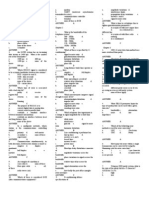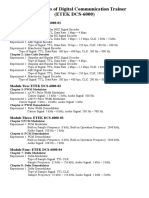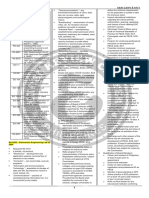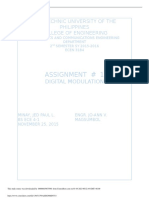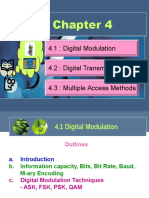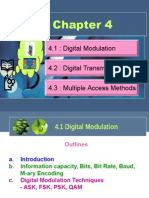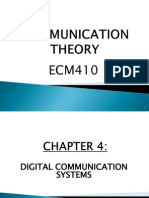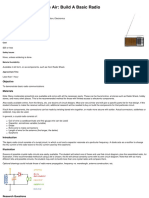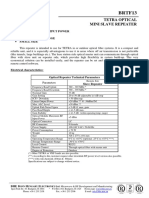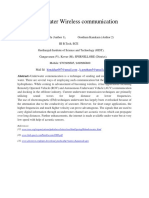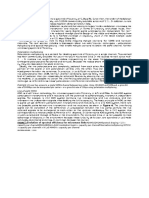0% found this document useful (0 votes)
245 views60 pagesChapter Digital Modulation
The document discusses digital modulation techniques. It begins with an introduction comparing analog and digital modulation. It then discusses digital modulation in more detail, its applications, advantages over analog systems, and important criteria. The document outlines different digital modulation techniques including ASK, FSK, PSK, and QAM. It provides examples and discusses related concepts such as information capacity, bits, bit rate, baud, M-ary encoding, and minimum bandwidth.
Uploaded by
Đặng Hoài TiếnCopyright
© © All Rights Reserved
We take content rights seriously. If you suspect this is your content, claim it here.
Available Formats
Download as PPT, PDF, TXT or read online on Scribd
0% found this document useful (0 votes)
245 views60 pagesChapter Digital Modulation
The document discusses digital modulation techniques. It begins with an introduction comparing analog and digital modulation. It then discusses digital modulation in more detail, its applications, advantages over analog systems, and important criteria. The document outlines different digital modulation techniques including ASK, FSK, PSK, and QAM. It provides examples and discusses related concepts such as information capacity, bits, bit rate, baud, M-ary encoding, and minimum bandwidth.
Uploaded by
Đặng Hoài TiếnCopyright
© © All Rights Reserved
We take content rights seriously. If you suspect this is your content, claim it here.
Available Formats
Download as PPT, PDF, TXT or read online on Scribd
/ 60




